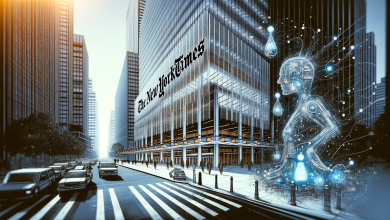Apple And Pixar Join Forces For The Future Of The Metaverse

In recent times, the concept of the metaverse has taken the tech world by storm. At the heart of this digital universe lies the need for seamless 3D content creation. Recognizing this, Apple, in collaboration with industry giants like Pixar, Adobe, Autodesk, and Nvidia, has formed the Alliance for OpenUSD. Their mission? To standardize the Universal Scene Description (USD) technology, a brainchild of Pixar, and make it the backbone of 3D content creation for the metaverse and beyond.
The Significance of USD in the Metaverse
The metaverse, often envisioned as a collective virtual shared space, requires intricate 3D worlds. The creation of these worlds is no small feat. It involves generating, storing, and transmitting vast amounts of data, known as “scene description.” Different applications in the 3D creation pipeline, from modeling to rendering, typically employ their unique form of scene description. This often leads to compatibility challenges, hindering collaboration.
Enter USD. More than just a file format, USD is a revolutionary technology that allows various 3D tools to “communicate.” It streamlines the entire development process, enabling creators to work on the same scene or project simultaneously. Any modifications made in one part of the environment get reflected across all other referencing elements. This seamless integration is crucial for the metaverse, where real-time collaboration and interaction are paramount.
Apple’s Stake in the Metaverse
Apple’s Vision Pro headset, a premium device offering immersive 3D experiences, stands to benefit immensely from the Alliance for OpenUSD. If creative tools widely adopt OpenUSD, it could simplify the development of 3D apps for devices like the Vision Pro and potentially Apple’s future AR glasses. This could position Apple as a dominant player in the metaverse tech frontier, especially if it offers apps that sway consumers towards its products over competitors like Meta.
Interestingly, Nvidia once mentioned that they believed “USD should serve as the HTML of the metaverse.” This analogy underscores the potential of USD to become the foundational technology for the metaverse, much like how HTML is for the internet.
The Road Ahead for USD and the Metaverse
While USD isn’t a new development, its potential as the industry standard is gaining traction. Major applications like Autodesk’s Maya, Adobe’s Substance 3D, and Nvidia’s Omniverse platform already support USD. Moreover, Apple’s history with USD dates back to WWDC 2018 when they introduced the USDZ format for AR content in iOS apps.
However, the journey towards standardizing USD for the metaverse isn’t without challenges. Notably absent from the Alliance for OpenUSD’s announcement are companies like Meta, Google, Samsung, and Qualcomm. Meta, in particular, is heavily invested in the metaverse, and its support could significantly influence the standardization of 3D asset creation.
Yet, the momentum behind the Alliance for OpenUSD is undeniable. With industry leaders like Epic Games and Unity expressing their support, the future of USD looks promising. As the race for 3D standardization intensifies, the metaverse’s vision of a unified digital universe seems closer to reality.





